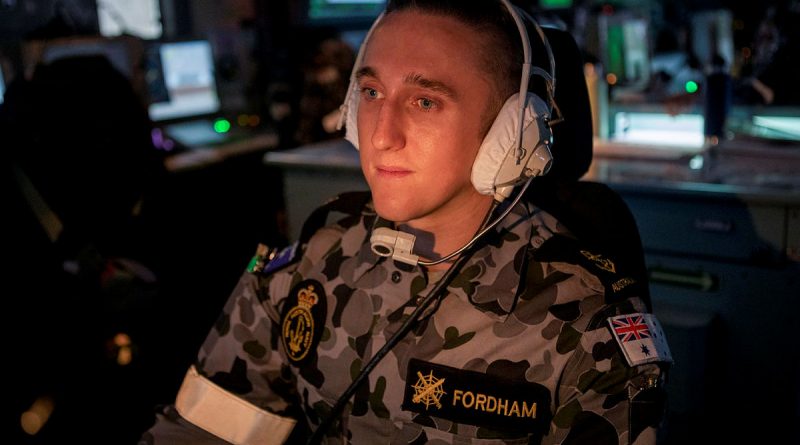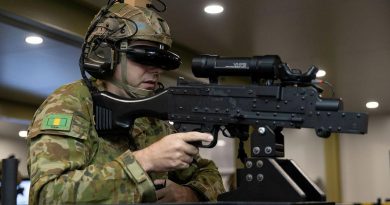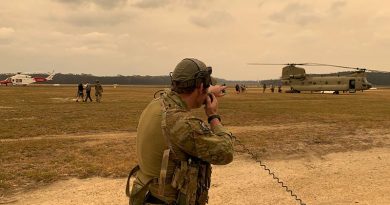Exercise gets real for aircraft controller

An activity in the South China Sea between the Royal Australian and United States Navies, and the RAAF, gave one HMAS Ballarat sailor the opportunity to develop his skills in maritime aircraft control.
CAPTION: Leading Seaman Combat Systems Operator Joshua Fordham operates an aircraft control console in the Operations Room of HMAS Ballarat during the ship’s Regional Presence Deployment. Story by Lieutenant Gary McHugh. Photo by Leading Seaman Ernesto Sanchez.
Leading Seaman Combat Systems Operator – Aircraft Controller Joshua Fordham is one of two anti-surface, anti-submarine tactical air controllers in Ballarat and is responsible for safely directing aircraft operating with the ship in order to achieve shared objectives.
Most recently, this meant coordinating the movements of Ballarat and its embarked MH-60R helicopter, Arleigh Bourke-class destroyer USS Curtis Wilbur and a RAAF P8-A aircraft.
With multiple platforms moving in the air and on the sea’s surface, Leading Seaman Fordham said understanding tracking their movements was critical.
“The high tempo environment of this activity makes it imperative that I maintain a clear and concise tactical appreciation of the airspace I am controlling,” Leading Seaman Fordham said.
“I have to ensure that aircraft are operating at safe levels and distances from each other, while still carrying out the task being directed from the ship.”
Commanding Officer Ballarat Commander Antony Pisani said the MH-60R and P8-A operating together presented the perfect opportunity for Leading Seaman Fordham to gain experience in a multi-aircraft environment.
“This part of the activity was particularly fortuitous as it presented the correct operating environment for Leading Seaman Fordham to gain valuable experience in his area of expertise,” Commander Pisani said.
“Leading Seaman Fordham and Ballarat overall have a higher level of proficiency in a critical area of maritime warfare as a result of this opportunity to work with a RAAF P8-A.”
Ballarat deployed in early April for a three-month Regional Presence Deployment throughout South-East and north-east Asia.
.
.

.
.





